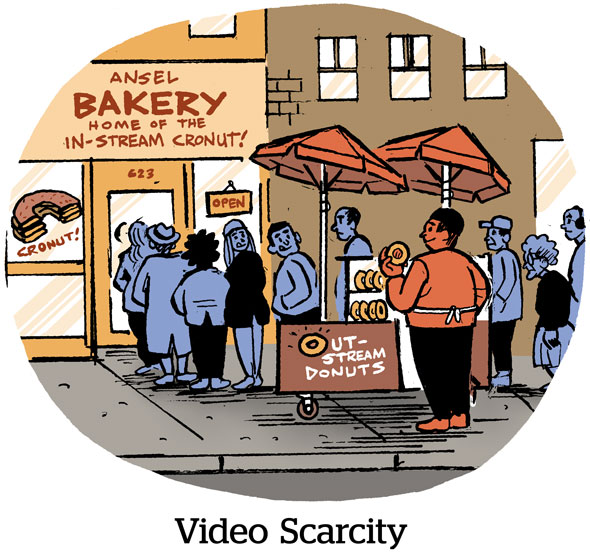AdExchanger is taking the day off for Labor Day! The daily news round-up will return September 5.
Here’s today’s AdExchanger.com news round-up… Want it by email? Sign up here.
Perverse Incentives
In March, the IAB Tech Lab issued updated video ad inventory classifications and urged the ad industry to follow them. But so far, only 20% to 30% of publishers have embraced the new guidelines, Adweek reports.
It’s no surprise that publishers have been slow to move on the latest standards, even as buyers are becoming increasingly fed up with the wildly uneven quality of programmatic video inventory.
For one, if publishers reclassify inventory, lower CPMs might result. Since the standards create a distinction between video ads played during videos (e.g., YouTube pre-roll) vs. video ads that play while someone is reading an article (e.g., sticky players or videos running in between article paragraphs), text-heavy publishers could also have a lot to lose, ad-revenue-wise, should they send the correct (less valuable) bid signals to the bidstream.
Second, it’s unclear who’s in charge of holding publishers accountable. SSPs? Publishers themselves? DSPs? The Trade Desk adopted the new specs in May but has been largely silent on how it’s ensuring publisher compliance.
Meanwhile, there are no consequences for passing noncompliant signals, since DSPs continue to accept them.
King Linear
TV advertisers aren’t switching over to streaming as quickly as viewers are, Ad Age reports.
Many buyers still spend more on linear. One agency exec says its clients allocated just 40% of their budgets to connected TV during this year’s upfront season, while another says its split was 45% streaming and 55% linear.
So, why does linear remain top dog despite all the cord-cutting?
One big reason is sports, of course. Another is that most streaming viewers still watch without ads. Right now, most of the top six platforms see less than a quarter of their total viewers subscribe to an ad-supported tier, according to Comscore.
Streaming services are trying desperately to push people onto ad offerings. Some of those efforts appear to be working: 17% of subscribers new to a service sign up with ads, compared with just 9% last year.
More digital services nabbing rights to air major sports leagues will funnel more ad dollars into streaming. Plus, the delays in fall primetime schedules because of the ongoing strikes should also help tip the scales in favor of streaming.
All Eyes On AI
The full list of participants for Senate Majority Leader Chuck Schumer’s AI insight forum has been revealed. And critics say the list is too representative of businesses that trade in AI, with little participation from AI experts or dissenting voices.
The forum could be Congress’ next step toward regulating generative AI and examining the technology’s implications on copyright law.
But only one participant – Writers Guild of America President Meredith Stiehm – stands out as representing creatives whose works are used to train AI.
And there doesn’t seem to be a voice for digital media outlets, which are taking an increasingly oppositional stance against AI. Almost 20% of the web’s top 1,000 sites are now blocking generative AI crawlers, Axios reports.
But AI’s critics will have a chance to air their grievances. The US Copyright Office has opened a public comment period on AI and copyright that will run from Aug. 30 to Oct. 18, with an additional window for replies extending to Nov. 15.
Call us cynical, but it’s unlikely the public comments will carry as much weight as a backroom filled with the CEOs of the world’s biggest tech companies.
But Wait, There’s More!
Ecommerce rivals Amazon and Shopify partnership will bring “Buy with Prime” option to Shopify checkout. [TechCrunch]
Twitter/X plans to collect biometric data and work and education history from X Premium users. [Bloomberg]
Hackers are advertising stolen government emails on Telegram for use in fraudulent emergency data requests from social platforms. [404 Media]
Malwarebytes eliminates 100 jobs as it splits its consumer-facing and corporate business units into separate entities. [TechCrunch]
Barstool Sports will also cut 100 jobs. [NY Post]
Instagram is testing a 10-minute runtime limit for Reels videos, which are currently capped at 90 seconds. [Search Engine Journal]

















